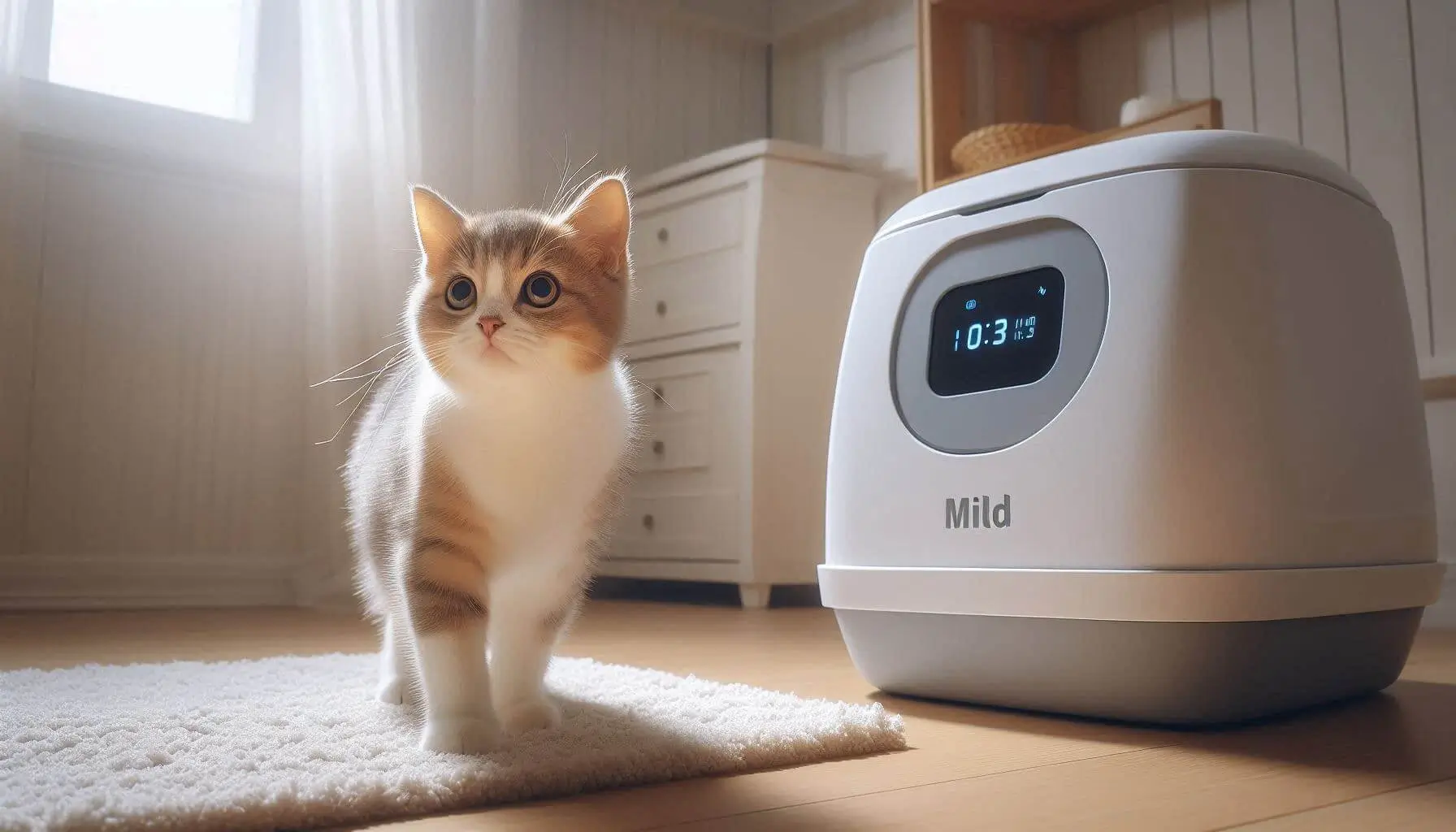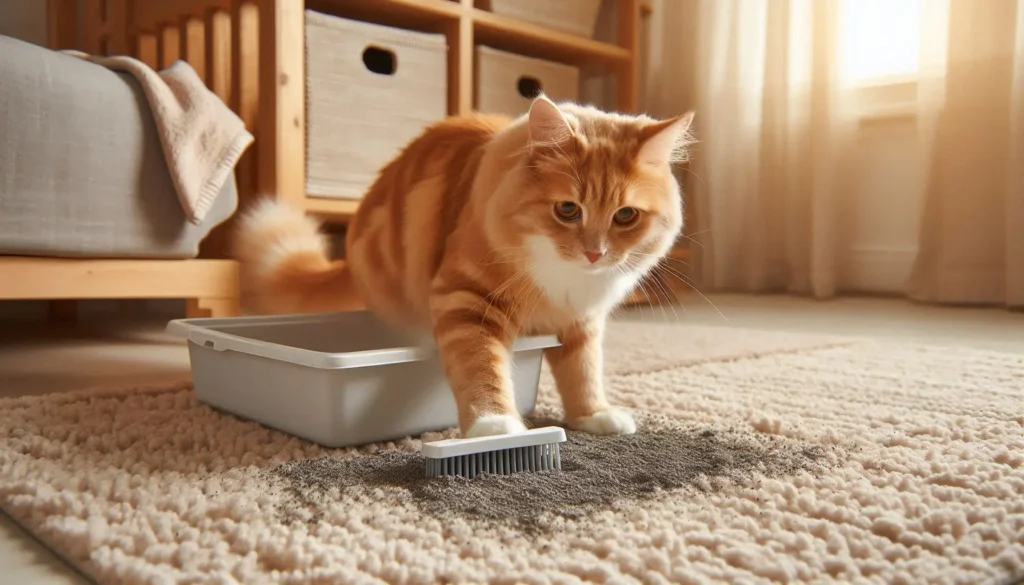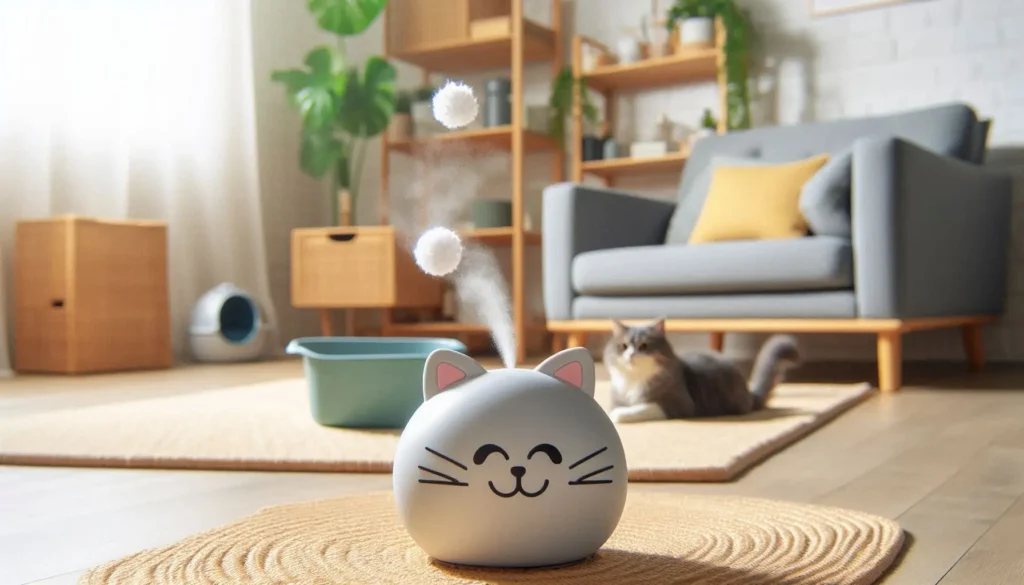Are Cats Afraid of Self-Cleaning Litter Boxes? 5 Proven Tips to Help Your Feline Adjust
Last updated: 19 Apr 2024
We independently research, review, and recommend the best products—If you buy something through our links, we may earn an affiliate commission.

Are Cats Afraid Of Self-Cleaning Litter Box?
Yes, some cats may be afraid of self-cleaning litter boxes. Especially if they are not used to them or if they have had a negative experience with one in the past. Some cats may be intimidated by the noise or movement of their mechanism. Or they may be hesitant to use an unfamiliar object. Here are below five ways to tackle your cat’s fear smoothly.
How to Ease Your Cat's Fear of an Automatic Litter Box?
If you are considering bringing a new self-cleaning litter box to your home, It may be helpful to gradually introduce your cat to the new device. This can involve placing the litter box in a location where your cat feels comfortable. It allows your cat to explore the litter box on their own terms.
1. Keep the old and new boxes side-by-side
It’s often helpful to keep both the old and new litter boxes close during the transition period. This will allow your cat to explore the new box at their own pace without feeling rushed or anxious. By having both boxes available, they can gradually become familiar with the new addition to their space, making the transition smoother for them.
You may also consider filling both litter boxes with the same type of litter initially. This helps maintain a sense of familiarity for your cat, as they’ll recognize the scent and texture they’re accustomed to. As your cat grows more comfortable with the new box, you can slowly introduce the recommended litter for that specific box.
2. Ensure easy access
In addition to maintaining the litter box itself, it’s important to keep the surrounding area clean and free of debris. Wiping down the exterior of the box and clearing any litter spillage helps maintain an encouraging environment for your cat to use the box.
Ensure that the entrance and exit of the litter box are easily accessible, especially if they are elderly or have mobility issues. Making adjustments as needed ensures that your cat can use the litter box without any difficulty or discomfort.
3. Reward your cat
Encourage your cat’s curiosity and exploration of the new litter box by rewarding them with treats, catnip, or praise. Sprinkling a bit of used litter from the old box into the new one can also help transfer familiar scents and reassure your cat that the new box is a safe and acceptable place to eliminate.
4. Give your cat time to adjust
Every cat adjusts to change at their own pace, so it’s essential to give them time to adapt. Be patient and observant, watching for signs of stress or avoidance behaviors such as reluctance to approach the box or inappropriate elimination. If necessary, consult with your veterinarian for guidance on helping your cat through the transition period.
5. Recognize signs of stress
If your cat shows signs of distress or reluctance to use the new litter box, consider making adjustments to address their concerns. This could involve relocating the box to a quieter or more private area, modifying the cleaning cycle settings to reduce noise, or exploring alternative litter box models that better suit your cat’s preferences.
What if it's not working?
Transitioning your cat to an automatic litter box requires patience, positive reinforcement, and attentive observation of your cat’s behavior. Remember to prioritize your cat’s comfort and well-being throughout the process, and celebrate each step forward in their transition to the new litter box. Keep in mind that your cat is not being stubborn or difficult to deal with. They’re most likely just intimidated and need us to give them some time until they get used to the new, weird-looking robot in the house.

Frequently Asked Questions
According to the 2022 ISFM/AAFP Cat Friendly Veterinary Environment Guidelines published in the Journal of Feline Medicine and Surgery, the litter box should be 1.5 times the length of your cat from the nose to the tip of the tail. Whereas the width should be equivalent to your cat’s length, the tail is not included. A cat that is about 18 inches long needs a litter box that measures 27” long by 18″ wide. A litter box that most likely doesn’t exist out there. That is why it is best to select the largest and nicest litter box for your beloved cats.
It is recommended that you use a maximum of 2 inches to 4 inches of litter in your litter box. If there are numerous cats using the litter box, you’ll need 3 to 4 inches of litter to absorb all that urine and clump around.
In fact, anything less than 2 inches will cause unpleasant odors to develop as well as a high probability of inappropriate elimination. On the other hand, too much litter will lead to a mess since most cats will simply kick it outside.
Research was conducted and published in the Journal of Feline Medicine and Surgery regarding this subject. The results showed that out of 28 different cats, 4 showed a preference for covered litter boxes and 4 for open litter boxes. The rest of the cats were happy to use any type of box they provided as long as it was well-cleaned.
This only shows that our cats have unique preferences, and only by getting to know them will we be able to fulfill their needs in the best way possible.
If you have one cat at home, you’ll most likely need to change clumping cat litter every 2–3 weeks. However, if you’re using a non-clumping litter, you’ll have to change the litter completely twice a week.
If you have an automatic litter box, you can perform a deep cleaning once a month. Unless, of course, there is a problem of feces scattering or building up inside the litter box. You will need to clean it more often in that case.
If you have a manual litter box, the litter should be scooped and cleaned at least twice a day.
Cats love to have their cat litter boxes in a corner that is calm, private, and accessible. You’ll also need to keep food away from this spot in order to leave this space dedicated to sanitary activities.



